Twinleaf Jeffersonia dubia

ABOUT
Jeffersonia dubia, commonly known as Twinleaf, is a perennial plant named for its distinctive foliage, which resembles a pair of leaves joined together at the base. This gives the impression of a single, butterfly-like leaf which is divided into two equal halves. Each leaf is connected to the main stem by a long, slender petiole, making it appear quite elegant. The foliage is typically a bright green, providing an attractive backdrop to the delicate flowers which bloom in early spring. The flowers of Twinleaf are particularly notable. They rise above the foliage on slender stalks, each bearing a solitary bloom. The color of the flowers ranges from a deep shade of lavender to a pale blue or occasionally white, with a cluster of golden anthers in the center, which adds a pop of contrasting color. Each flower is composed of eight petals that are arranged neatly in a radial pattern, giving them a balanced, symmetrical look. After flowering, Twinleaf produces interesting seed pods that have a somewhat pear-like shape, adding further interest to the plant as it progresses through its life cycle. The overall impression of Twinleaf is one of delicate charm and understated elegance, making it a favored choice for gardeners looking to add a touch of tranquility to their shade gardens.
About this plant
 Names
NamesSynonyms
Asian Twinleaf, Korean Twinleaf, Rheumatism Root
Common names
Jeffersonia diphylla.
 Toxicity
ToxicityTo humans
Jeffersonia dubia, also known as twinleaf, has no well-documented toxicity to humans. There is limited information available about the toxicity of this specific plant, which suggests that it is not commonly known to be poisonous. Therefore, there are no widely recognized symptoms of poisoning from ingesting twinleaf. However, it is always advisable to exercise caution and avoid ingesting parts of plants that are not established as safe for consumption.
To pets
Jeffersonia dubia, known commonly as twinleaf, does not appear on the lists of plants commonly known to be toxic to pets. It seems to lack significant toxicity to dogs and cats. However, although no specific symptoms of twinleaf poisoning in pets are readily found, it's generally recommended to prevent pets from eating plants that are not confirmed to be safe. If ingestion does occur, monitor the pet for any signs of illness and consult a veterinarian if any adverse reactions are observed.
 Characteristics
CharacteristicsLife cycle
Perennials
Foliage type
Deciduous
Color of leaves
Green
Flower color
Blue
Height
0.5 feet (15 cm)
Spread
1 foot (30 cm)
Plant type
Herb
Hardiness zones
5
Native area
Korea
Benefits
 General Benefits
General Benefits- Ornamental Value - Jeffersonia dubia, commonly known as twinleaf, has attractive blue to violet flowers in the spring which enhance garden aesthetics.
- Natural Habitat Enrichment - Twinleaf supports local ecosystems by providing habitat and food sources for native pollinators and wildlife.
- Soil Erosion Control - By establishing itself in woodland settings, twinleaf can help stabilize the soil and prevent erosion.
- Low Maintenance - Twinleaf is known for requiring minimal care once established, making it suitable for low-maintenance gardening.
- Seasonal Interest - With its spring blooms and unique foliage that resembles butterfly wings, twinleaf adds seasonal interest to shaded garden areas.
- Cultural Significance - Twinleaf has historical and cultural significance for some Native American tribes, which can be educational and insightful for garden enthusiasts.
 Medical Properties
Medical PropertiesThis plant is not used for medical purposes.
 Air-purifying Qualities
Air-purifying QualitiesThis plant is not specifically known for air purifying qualities.
 Other Uses
Other Uses- Jeffersonia dubia, commonly known as Korean twinleaf, can be used in thematic gardens that focus on plants named after historical figures, as it was named after Thomas Jefferson.
- The plant's distinct two-lobed leaves can serve as an educational tool for botany students studying leaf morphology and plant taxonomy.
- Korean twinleaf can be utilized in garden design to create contrasting textures due to its uniquely shaped leaves compared to more common foliage forms.
- Jeffersonia dubia can be featured in native plant gardens or woodland garden settings, as it is indigenous to Northeast Asia and can create a naturalized look.
- The plant may be used in art and photography, as its delicate flowers and interesting foliage provide aesthetic value and are visually appealing subjects.
- Korean twinleaf can be part of a sensory garden, offering a tactile experience with its smooth leaves and interesting seed pods.
- The seed capsules of Jeffersonia dubia could potentially be used in crafts or as a natural decoration in floral arrangements once dried.
- Its early spring bloom time makes Korean twinleaf valuable for supporting early season pollinators in gardens and natural habitats.
- During spring, the plant can be an indicator of seasonal change in climate-responsive gardens, as it blooms shortly after the last frost.
- The plant is suitable for cultivating alongside other shade-loving species in terrariums or enclosed garden spaces, complementing ferns and mosses.
Interesting Facts
 Feng Shui
Feng ShuiThe Twinleaf is not used in Feng Shui practice.
 Zodiac Sign Compitability
Zodiac Sign CompitabilityThe Twinleaf is not used in astrology practice.
 Plant Symbolism
Plant Symbolism- Rarity: Given the specific nature of Jeffersonia dubia, often referred to by its common name 'Twinleaf,' it symbolizes rarity or uniqueness due to its relatively scarce occurrence and distinctive two-lobed leaves.
- Medicinal Properties: Historically, Twinleaf was used for its medicinal qualities by indigenous peoples and early settlers, which can lead it to symbolize healing and therapeutic properties.
- Balance and Duality: The twin leaves of the Twinleaf plant represent balance and duality, symbolizing the idea of harmonizing opposing forces or aspects in life.
- New Beginnings: The Twinleaf often blooms in early spring, making it a symbol of new beginnings, renewal, and the awakening of nature after winter.
 Water
WaterFor Asian bluestar (Jeffersonia dubia), ensure the soil remains moist but never waterlogged. Water the plant thoroughly when the top inch of soil feels dry to the touch, which usually equates to about once a week during the growing season. About 16-24 onzes each time should be sufficient for a small to medium-sized plant, though this can vary depending on the size of the plant and environmental conditions. It's best to water less often during the dormant season (fall and winter) to match the plant's reduced water needs. Make sure to provide a well-draining environment to avoid root rot.
 Light
LightAsian bluestar prefers a spot that offers part shade, with dappled sunlight being ideal. It thrives under the canopy of taller trees or shrubs, which simulates its natural woodland habitat. Direct afternoon sunlight should be avoided as it can scorch the leaves of the plant. The morning sun followed by afternoon shade will help maintain the vibrant color and health of its foliage.
 Temperature
TemperatureAsian bluestar grows best in temperate climates and is hardy in areas where the temperature ranges from about 30°F to 85°F. It can survive short periods of colder or warmer temperatures but prolonged exposure to temperatures below 20°F or above 90°F may harm the plant. Ideally, provide a location that maintains a stable temperature within this range to ensure the health and vigor of the Asian bluestar.
 Pruning
PruningAsian bluestar does not generally require frequent pruning. Pruning can be done to remove spent flower stems after blooming to encourage a tidy growth habit and to remove any damaged or diseased leaves as necessary. Pruning is best performed in late winter or early spring before new growth begins. Occasional thinning may also be beneficial to maintain airflow and reduce the risk of disease.
 Cleaning
CleaningAs needed
 Soil
SoilTwinleaf needs well-draining soil with a high organic matter content, ideally with leaf mold or compost. A soil pH ranging from 6.0 to 7.0 is best for this woodland perennial. A mix consisting of one part garden soil, one part peat moss or coconut coir, and one part perlite or sand would provide suitable conditions.
 Repotting
RepottingTwinleaf should be repotted every 2-3 years or when it appears to be outgrowing its current container. Repotting in early spring is ideal, gently handling the delicate root system to prevent damage.
 Humidity & Misting
Humidity & MistingTwinleaf thrives in moderate to high humidity, typical of its native woodland environment. Maintaining indoor humidity levels around 50% will help mimic its natural habitat and support its growth.
 Suitable locations
Suitable locationsIndoor
Provide bright, indirect light and keep the soil consistently moist for healthy growth.
Outdoor
Plant in partial shade, mulch well, and ensure soil is rich and moist.
Hardiness zone
5-8 USDA
 Life cycle
Life cycleTwinleaf (Jeffersonia dubia) begins its life cycle as a seed, which germinates in spring when soil temperatures warm up. Upon germination, the seed develops a primary root and a shoot that emerges above the soil, unfolding its characteristic twin leaflets. As the plant matures, it forms a low-growing clump with more leaves and by the second or third year, it produces its distinctive purple to lavender flowers in early spring, often before the canopy of the forest closes. After pollination, typically by insects, the flowers develop into pear-shaped capsules containing several seeds. During summer, the plant goes through a dormancy period, where above-ground foliage dies back, and it survives underground as a rhizome. The cycle repeats each spring when the plant breaks dormancy, regrows its leaves, and continues its growth and reproductive cycle.
 Propogation
PropogationPropogation time
Spring
The most popular method of propagation for the Twinleaf (Jeffersonia dubia) is by seed. The best time to sow the seeds is immediately after they are ripe, which typically occurs in late spring or early summer. Fresh seeds should be planted in a cold frame as soon as they are harvested. It's important to keep the soil moist until germination, which may take up to a year. Seedlings can be transplanted to their final positions in the garden in the following spring. This method relies on the natural cold stratification process to break the seed's dormancy, resulting in a higher germination rate. Twinleaf can also be propagated by division of established clumps, but this is less common due to the plant's fragile root system.

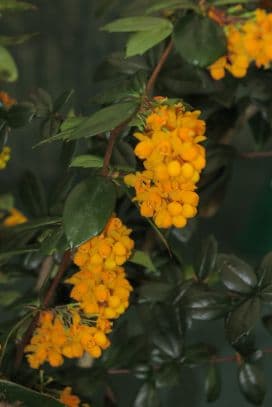
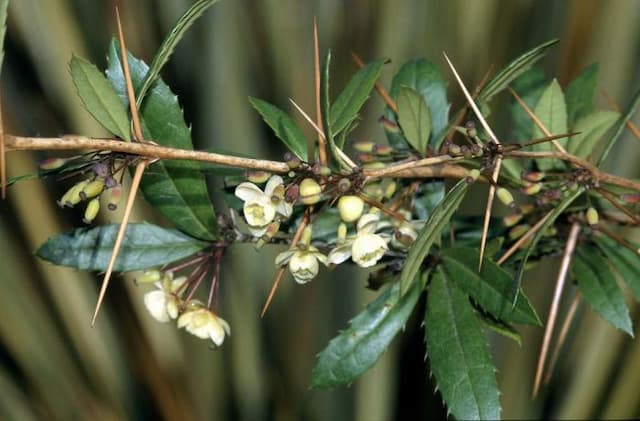
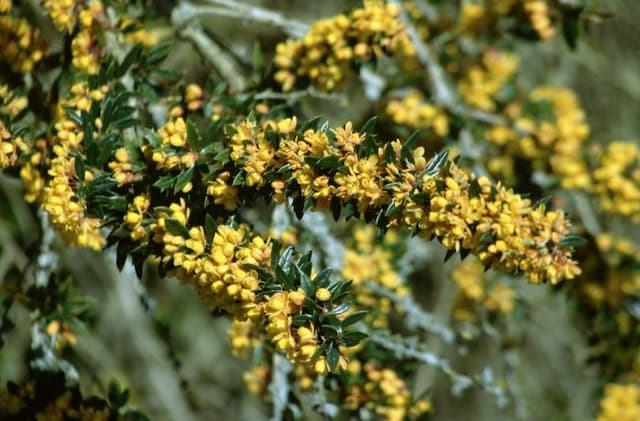

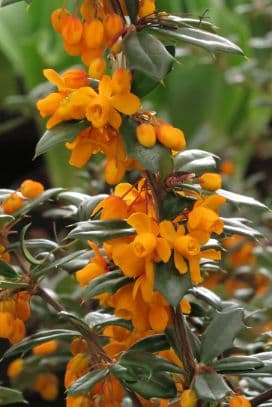
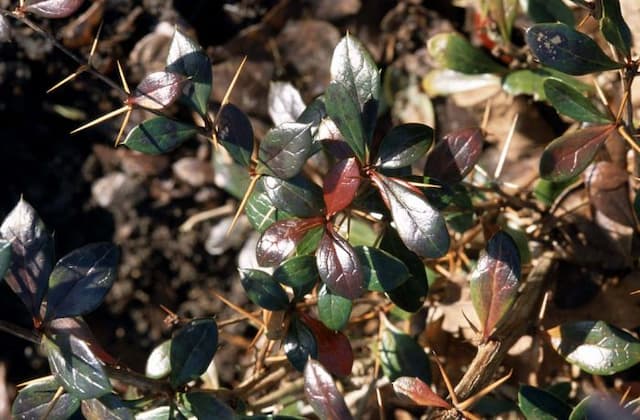


![Japanese barberry [Bonanza Gold]](/_next/image?url=https%3A%2F%2Fplants-admin.emdemapps.com%2Fimages%2Fplants%2F%2Fimages%2F604b5385e413f.png&w=640&q=75)